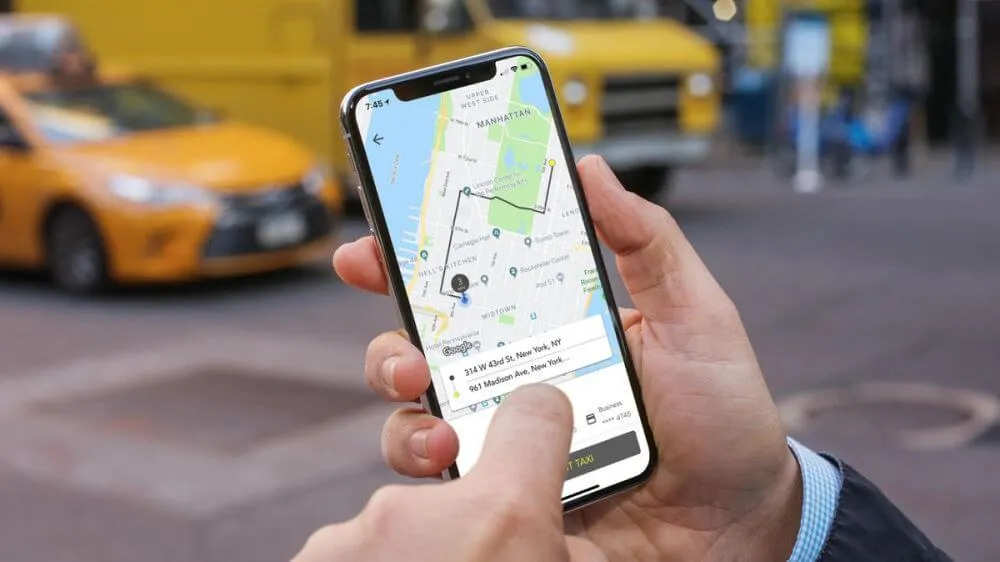
Ultimate Guide to Choosing the Best Mobile App Development Company for Taxi App Services in 2025
Ultimate Guide to Choosing a Taxi App Development Company in 2025
So you’re wondering how to pick the perfect taxi app development company to bring your ride-hailing dream to life? Cool—let’s dive right in. In this guide, we’ll break down why a solid taxi app is basically non-negotiable in today’s market, what features really matter, the tech stacks top companies use, ballpark costs, and how to zero in on the right partner (i.e., that killer taxi app development company) for your budget and goals.
Why Build a Taxi App in 2025? (Spoiler: Market’s Blowing Up)
Ride-hailing market is booming
The global ride-hailing market was valued at about $61.3 billion in 2022 and is projected to hit roughly $185.5 billion by 2026 (Statista). So yeah, there’s a ton of room for newcomers who can offer fresh features, better prices, or specialized services.
Consumers want convenience (like, yesterday)
A 2023 Deloitte survey found that 71% of customers prefer booking rides via app vs. calling a dispatcher (Deloitte). People love tapping a button vs. waiting on hold.
Tech has matured
With cross-platform frameworks (hello, Flutter and React Native) and cloud backends (AWS, Google Cloud), building robust apps is faster and more cost-effective than ever (Stack Overflow Dev Survey 2023).
Key Services of a Taxi App Development Company
Not every shop offers the same thing. Here’s what a top-tier taxi app development company should bring to the table:
Discovery & Research
They’ll map out your market, competitor apps (Uber, Lyft, local players), and user personas (who’s booking—commuters, tourists, senior citizens?).
UI/UX Design
Cute mockups? Nah. We need user flows that are intuitive—like, “Open app → Tap pickup → Confirm driver” in two secs flat.
MVP Development
Focus on must-haves first (user app, driver app, basic admin panel). Extra bells & whistles (loyalty programs, multi-stop routing) can wait till after launch.
>> Checkout this guide to build your mvp 10x faster
Backend & API
Real-time data, geolocation services, matching algorithms, push notifications—all built securely and scalably.
QA & Testing
Manual and automated tests for Android, iOS, different network speeds, edge cases (driver cancels, network drop).
Launch & DevOps
App Store / Play Store submission, setting up CI/CD pipelines, cloud hosting, monitoring, analytics.
Support & Maintenance
Bug fixes, minor updates, server monitoring, feature enhancements. (Not gonna lie, you’ll need this.)
Must-Have Features for Any Taxi App
User App
Geolocation with live tracking (Google Maps SDK, Mapbox).
Ride booking & fare estimation (dynamic pricing).
Multiple payment options (credit cards, digital wallets, even cash).
Real-time driver tracking & ETA.
Ratings & reviews.
Ride history & receipts.
Driver App
Trip requests & accept/reject.
Navigation & route optimization.
Earnings dashboard.
Status toggles (online/offline).
In-app chat / call with riders (optional).
Admin Dashboard
User & driver management.
Trip analytics & insights.
Surge pricing controls.
Vehicle management (fleet, EVs, special vehicles).
Financial reports & payout config.
Emerging Trends You Can’t Ignore
AI-Powered ETA & Matching
Uber’s deep neural network ETA gave them ~30% improvement in accuracy (Uber Engineering). ML is no longer extra; it’s table stakes for real-time predictions.
Electric Vehicle (EV) Integration
By 2030, EVs could make up 40% of global new car sales (McKinsey). If you want to stand out (and help the planet), build charging-station integration and EV route optimization.
Contactless & Wallet Payments
Cash is out. 80% of North American ride-hailing transactions are digital now (Statista). Integrate Stripe, Braintree, Paytm, or local wallet solutions.
Safety & Sanitization Features
Post-pandemic, in-ride safety checks, driver health logs, and touchless pickups are huge trust builders.
Micro-Mobility & Multi-Modal
Some taxi app dev companies are adding e-scooter or bike-share options. Users love “Hey, grab a scooter for the last mile” (Forbes).
Tech Stack Cheat Sheet
Front-end & Mobile
Flutter (Dart) or React Native (JavaScript) for cross-platform apps (faster dev, single codebase). Looking for no-code app builder, check out this article.
Swift for iOS, Kotlin for Android (if you need super-native performance).
Back-end
Node.js with Express / NestJS (JavaScript/TypeScript) – popular for real-time apps.
Python Django / Flask (if AI/ML integration).
Golang – high concurrency, fast performance.
Database
MongoDB for flexible schemas (trips, user data).
PostgreSQL for relational data (billing, earnings).
Redis for caching & pub/sub (real-time updates).
Cloud & DevOps
AWS (EC2, RDS, S3, Elasticache), Google Cloud (Compute Engine, Firestore).
Docker & Kubernetes for containerization & orchestration.
CI/CD: Jenkins, GitHub Actions, GitLab CI.
Cost to Hire a Taxi App Development Company
Ballpark for an MVP (user/driver apps + basic admin panel): $50,000 – $120,000
Full-featured app (AI, EV support, advanced dashboard): $150,000 – $300,000+.
Timeframe:
MVP: 3 – 5 months
Full product: 6 – 12 months
Factors Affecting Cost:
Feature complexity (in-app chat vs. video calls).
Third-party integrations (payment gateways, maps, AI services).
Design complexity (custom animations vs. basic UI).
Rates of the dev company (North America vs. Eastern Europe vs. Asia).
Pricing Model: Fixed bid vs. time & materials. Fixed bid is safer for clear scopes; T&M is flexible if you expect scope changes. No-code Dev Freelancer Vs Agency cost comparison
Step-by-Step: Working with Your Taxi App Development Company
Define Goals & Audience
Write a simple brief: “We want a commuter-focused app in City X with upfront fares and EV options.”
Check Portfolios & Reviews
Look for companies with ride-hailing experience. Ask for case studies.
Technical Proposal & Wireframes
Get rough wireframes and a tech stack recommendation. Make sure they explain why they chose it (not just “because we like Node”).
Sign NDA & Contract
Protect your idea and IP (especially if your app has a unique twist).
Discovery Phase
Market research, competitor analysis, user surveys. Should take 2 – 4 weeks.
Design & Prototype
Clickable prototype in Figma or Sketch. Test with a small user group (family, friends, maybe beta testers).
Development Sprints
Agile sprints (2 weeks each). You get incremental builds, so nothing drops in your lap last minute. https://appreadynow.com/post/how-to-build-project-management-app-without-code
QA & Beta Testing
Include real-world tests in your city. Network issues, wrong addresses, driver no-shows—iron out the kinks.
Launch & Marketing
App Store Optimization (ASO), social media teasers, referral campaigns (“Get $5 off your first ride!”).
Maintenance & Iteration
Monitor crash reports (Crashlytics), server logs, user feedback. Plan monthly updates.
How to Pick the Right Taxi App Development Company
Domain Expertise
Have they built ride-hailing or on-demand apps before? A company that’s done food delivery or logistics apps gets the real-time challenges.
Tech Stack Alignment
If you love .NET, don’t hire a Java-only shop. Match your preferences, or let them convince you if their stack has clear benefits.
Communication & Culture Fit
You want transparent updates (daily stand-ups, weekly demos). If they ghost you for two days straight—run.
Post-Launch Support
Will they fix bugs in a week or two? Ask about SLAs (Service-Level Agreements).
Pricing Model
Fixed bid vs. time & materials. Fixed bid is safer for clear scopes; T&M is flexible if you expect scope changes.
Client Testimonials & Reviews
Check Clutch.co, GoodFirms, or Upwork reviews. Reach out to past clients if you can.
Case in Point: Micro-Taxi Startup “ZoomGo”
(Okay, not a real app, but imagine…)
ZoomGo partnered with a mid-sized Eastern Europe firm. They wanted to launch in 3 Tier-2 Indian cities with EVs and local language support. The company:
Delivered an MVP in 4 months.
Integrated Google Pay & Paytm in week 1 (huge for local users).
Pushed a safety feature where drivers uploaded a daily health selfie (post-COVID trust maker).
Result: 20,000 downloads in month 1 and a 4.6/5 rating average on Play Store.
Wrap-Up (Kinda)
Alright, that’s the lowdown on picking a taxi app development company in 2025. We covered market trends (AI, EVs, digital wallets), must-have features, tech stacks, costs, and how to vet your ideal partner. Not gonna lie—it’s a lot. But if you break it down step by step, you’ll end up with a ride-hailing app that stands out and scales.
Anyway, go forth and build something awesome. And hey, feel free to bookmark this guide for later (personal API call? ha). Good luck!


